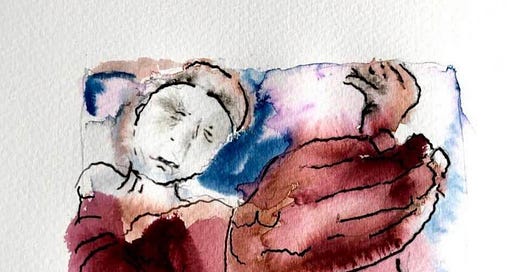Letter from France. The U.S. has the worst healthcare system of the 11 wealthiest nations.
We are on vacation in France.
A week in Paris and another in Provence.
With the U.S. seeing an uptick in Covid cases we are back to wearing a mask indoors back home.
We flew over with our masks on.
But the weather being what it is we spend most of our time, except when we are eating, outdoors.
Today we spent a wonderful morning strolling the gardens of the Rodin Museum and we weren’t wearing masks.
Nobody was.
Although mask wearing back home may not be at the level it needs to be, it was more than a little disorienting to be in Paris where nobody that we could observe indoors or out was wearing a mask.
But I’m learning not to make judgments about other countries when it comes to healthcare when I live in a country that is last on almost every measure comparing the 11 wealthiest nations.
In a 2021 report by the Commonwealth Fund, the United States was nothing short of dismal when it comes to taking care of the health of our people.
The report looked at access to care, care process, administrative efficiency, equity and health outcomes. On three of the four the U.S. was last out of 11.
Access to care includes measures of health care’s affordability and timeliness. The Netherlands performs best on this performance domain among the 11 countries, ranking at or near the top in both subdomains. Norway and Germany also performed well on access to care (Exhibit 1), but all three are outranked on affordability by the U.K. (Exhibit 5).
Overall, the U.S. is #11 — last — on access to care. The U.S. has the poorest performance on the affordability subdomain, scoring much lower than even the next-lowest country, Switzerland (Exhibit 5). Compared to residents of the U.S., residents of the Netherlands, the U.K., Norway, and Germany are much less likely to report that their insurance denied payment of a claim or paid less than expected. Residents of these countries are also less likely to report difficulty in paying medical bills
People in the countries performing the best on the timeliness subdomain are more likely to be able to get same-day care and after-hours care. The U.S. ranked #9 on timeliness.
Now to be fair, France doesn’t score so great.
But the difference between #10 and the U.S. at #11 is staggering.
And the bottom line is that folks in the U.S. are sicker than folks in any of the other ten wealthy countries.
Health care outcomes reported here refer to those health outcomes that are most likely to be responsive to health care.
The U.S. ranks last overall on the health care outcomes domain. On nine of the 10 component measures, U.S. performance is lowest among the countries, including having the highest infant mortality rate (5.7 deaths per 1,000 live births) and lowest life expectancy at age 60 (23.1 years). The U.S. ranks last on the mortality measures included in this report, with the exception of 30-day in-hospital mortality following stroke. The U.S. rate of preventable mortality (177 deaths per 100,000 population) is more than double the best-performing country, Switzerland (83 deaths per 100,000).
The U.S. has exceptionally poor performance on two other health care outcome measures. Maternal mortality is one: the U.S. rate of 17.4 deaths per 100,000 live births is twice that of France, the country with the next-highest rate (7.6 deaths per 100,000 live births).
The second is the 10-year trend in avoidable mortality. As depicted in Exhibit 8, all countries reduced their rate of avoidable mortality over 10 years, but the U.S., with the highest level in 2007, reduced it by the least amount — 5 percent reduction in deaths per 100,000 population by 2017 — compared to 25 percent in Switzerland (by 2017) and 24 percent in Norway (by 2016).
And don’t get me started on how this compares to our spending on war.




